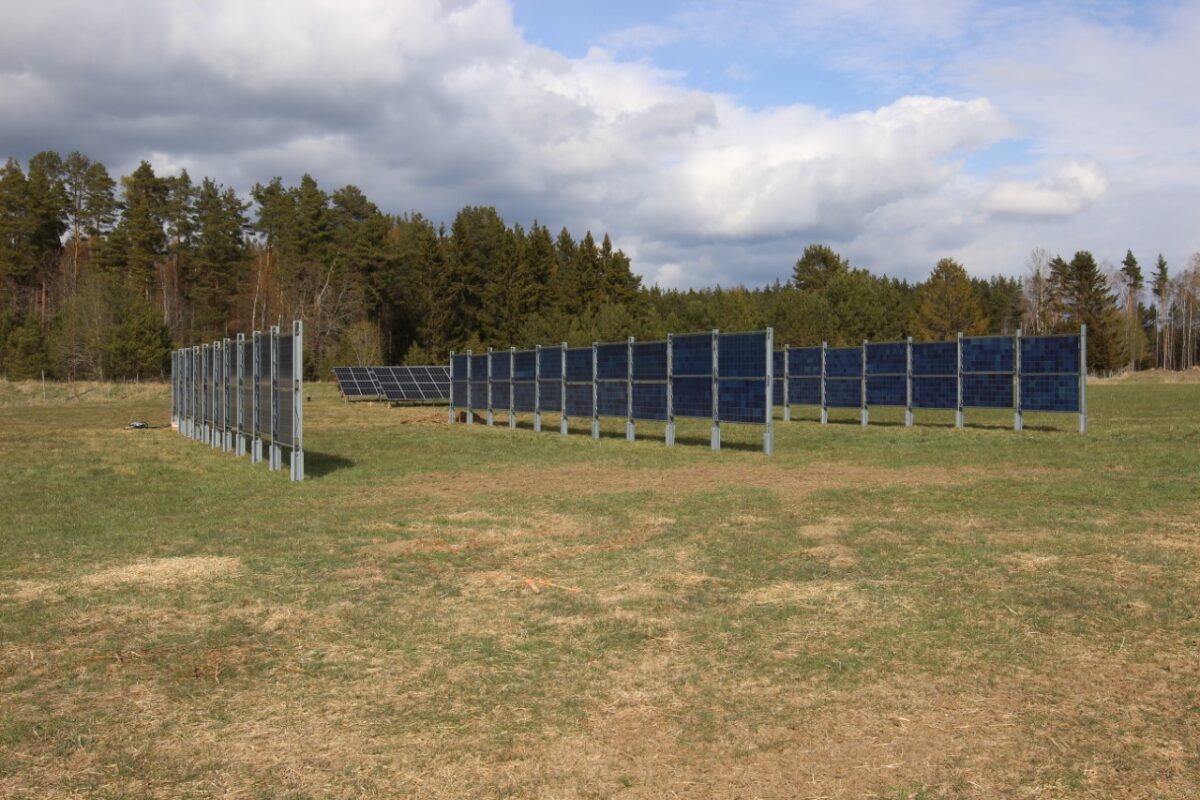From pv magazine global
A research group led by the University of Liège in Belgium has looked at the potential of vertical agrivoltaics to improve water usage and reduce PV curtailment in regions with severe drought. The scientists focused their analysis on Chile’s Maule region, which has a strong agricultural profile and is affected by chronic periods of drought.
“I think vertical PV would be feasible and interesting in many other regions of Chile considering the troubles they have with scarcity of water and the type of crop they have,” the research’s corresponding author, Roxane Bruhweyler, told pv magazine. “We decided to focus on the central region because of the additional problem of the water conflict between farmers and hydropower centrals and the importance of irrigated agricultural lands in that region. This particularly makes sense when you are evaluating the geometry of an agrivoltaic system that you suspect to be able to reduce the evapotranspiration of the crop.”
They quantified the anticipated reduction in water usage when converting irrigated agricultural land to vertical agrivoltaics and assessed the expected power generation of a 100 kW north-tilted PV array in Chanco, located in the Maule region’s Cauquenes province. The PV system reduces the cultivated area of the agricultural surface by 15%, and a 14 m gap between the rows of bifacial solar modules enables the use of agricultural machinery.
“Shading of the crop on the solar panels is negligible for most cereals and forage crops and there is no effect at all for a crop height below 105 cm,” the scientists explained.
They conducted a series of simulations on the system considering the global horizontal irradiance, ambient temperature, and wind speed as input data. They also used hourly weather data for 2021 and the PVLIB-Python modeling tool produced by Sandia National Laboratory, which calculates solar irradiance on the plane of a PV panel (POAI), measured as kWh/m2/day, to analyze the array’s power production.
Through these measurements, the academics were able to verify that the vertical PV system could reduce water demand for the irrigated main crops. They also found that the PV installation produces 10% less energy than conventional PV systems.
“However, the agrivoltaic facility offers a two-peak generation profile that allows the spreading of the production of photovoltaic energy over the day, reducing the risk of curtailments,” they stated. The microclimate heterogeneity analysis of this vertical agrivoltaics suggests that plants will need slightly different amounts of water depending on their position between the rows of panels.”
The researchers presented their modeling in “Vertical agrivoltaics and its potential for electricity production and agricultural water demand: A case study in the area of Chanco, Chile,” which was recently published in Sustainable Energy Technologies and Assessments.
“Future work will aim to further validate the computational models tested in this study through field monitoring of vertical AV sites in collaboration with other partners, with a specific focus on the effects of these installations on microclimate and water balance, energy yield prediction uncertainties, and crop growth,” they said, in reference to their future plans.
The research group includes scientists from Hochschule Anhalt University of Applied Sciences in Germany, French technology company Naldeo Technologies Industries, and Universidad de Santo Tomás in Chile.
This content is protected by copyright and may not be reused. If you want to cooperate with us and would like to reuse some of our content, please contact: editors@pv-magazine.com.









By submitting this form you agree to pv magazine using your data for the purposes of publishing your comment.
Your personal data will only be disclosed or otherwise transmitted to third parties for the purposes of spam filtering or if this is necessary for technical maintenance of the website. Any other transfer to third parties will not take place unless this is justified on the basis of applicable data protection regulations or if pv magazine is legally obliged to do so.
You may revoke this consent at any time with effect for the future, in which case your personal data will be deleted immediately. Otherwise, your data will be deleted if pv magazine has processed your request or the purpose of data storage is fulfilled.
Further information on data privacy can be found in our Data Protection Policy.